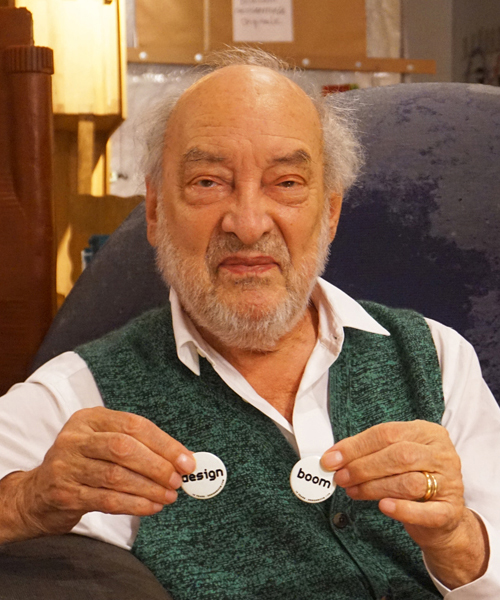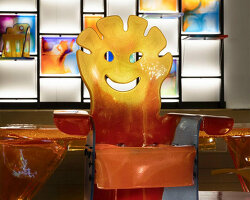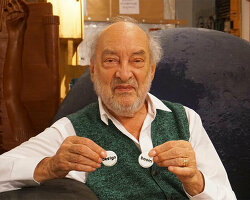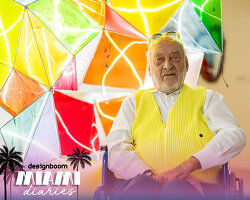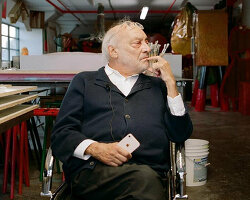with a career spanning four decades and projects completed in architecture, urban planning, interior, exhibition and industrial design, gaetano pesce is one of the most versatile and unconventional designers of the 20th century. born in la spezia — a coastal city in the north of italy — pesce has called venice, london, helsinki and paris home, before finally relocating to new york in 1980 where he lives and works today.
designboom recently visited pesce’s office in new york and discovered his personal wunderkammer of objects and elements. sitting on his ‘notturno a new york’ sofa, pesce spoke with us the architecture he appreciates in the city, his approach to new projects, and the creative fascinations that drive his work today.
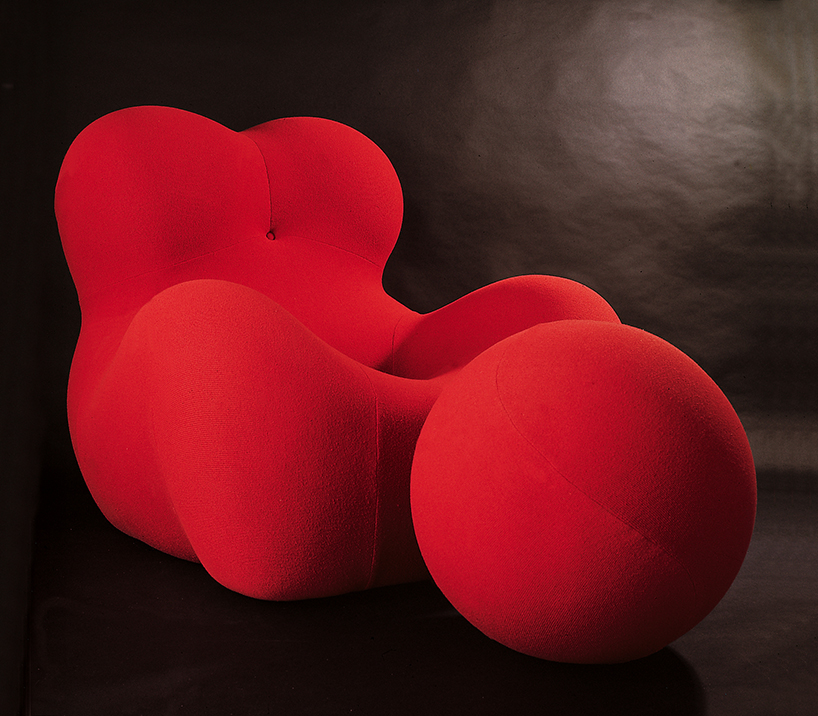
up chair 5&6, 1969 | image courtesy of gaetano pesce’s office
designboom (DB): can you pinpoint the origin of your interest in design?
gaetano pesce (GP): I came to design because a friend of mine, when we were 18 or 19 years old, discovered that in venice there was a new school at the university level dedicated to design. so I was going to this school not as a student, but because I was with this friend going to listen to the lessons of the teachers. there were some very interesting teachers. one very famous one was ernesto rogers, the uncle of richard rogers, the architect that is living in london. there was scarpa, there was bellini…and I was a student of architecture. when I had time, I was listening to the lessons. then one day an industrialist came to me to buy my drawings, because he heard that I was doing drawings. I discovered that there was this very famous company who was doing what we call today ‘italian design’ — he was called cesare cassina. I became friends with this gentleman, but I didn’t do anything for him for years. then one day, when I had an idea, I went to him to say: I have this idea.
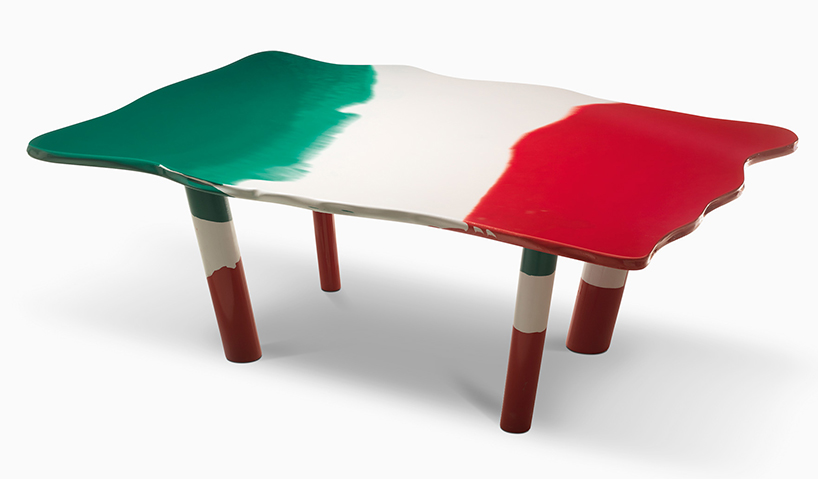
the ‘sessantuna’ table for cassina | image courtesy of studio 12
read more about the project on designboom here
GP (continued): so this is the story of how I started to do something in the field of design. I understood that design is more than what the teachers were saying. it’s a language much more deep and important. it’s not only knowledge of who makes objects comfortable, but it can be — in my opinion — also something that is a kind of witness to our time, making objects. with that experience, I understood I was opening new possibilities, and that’s what I’m doing today I think. when I said at the beginning that design is not what I do all the time, what I mean is that I’m curious about different things. I can use architecture sometimes because someone asks me to do a project, or because I have the curiosity to do something with this media…or I do drawings, I do sculpture. it depends on what the idea is. I call that a ‘multidisciplinary attitude’. to have an example of that, we have to go to the renaissance time in italy, when you had artists expressing something in architecture, in sculpture, in painting, in poems, like michalengelo, rafael, or leonardo da vinci. there is a tradition, and I come from that tradition.
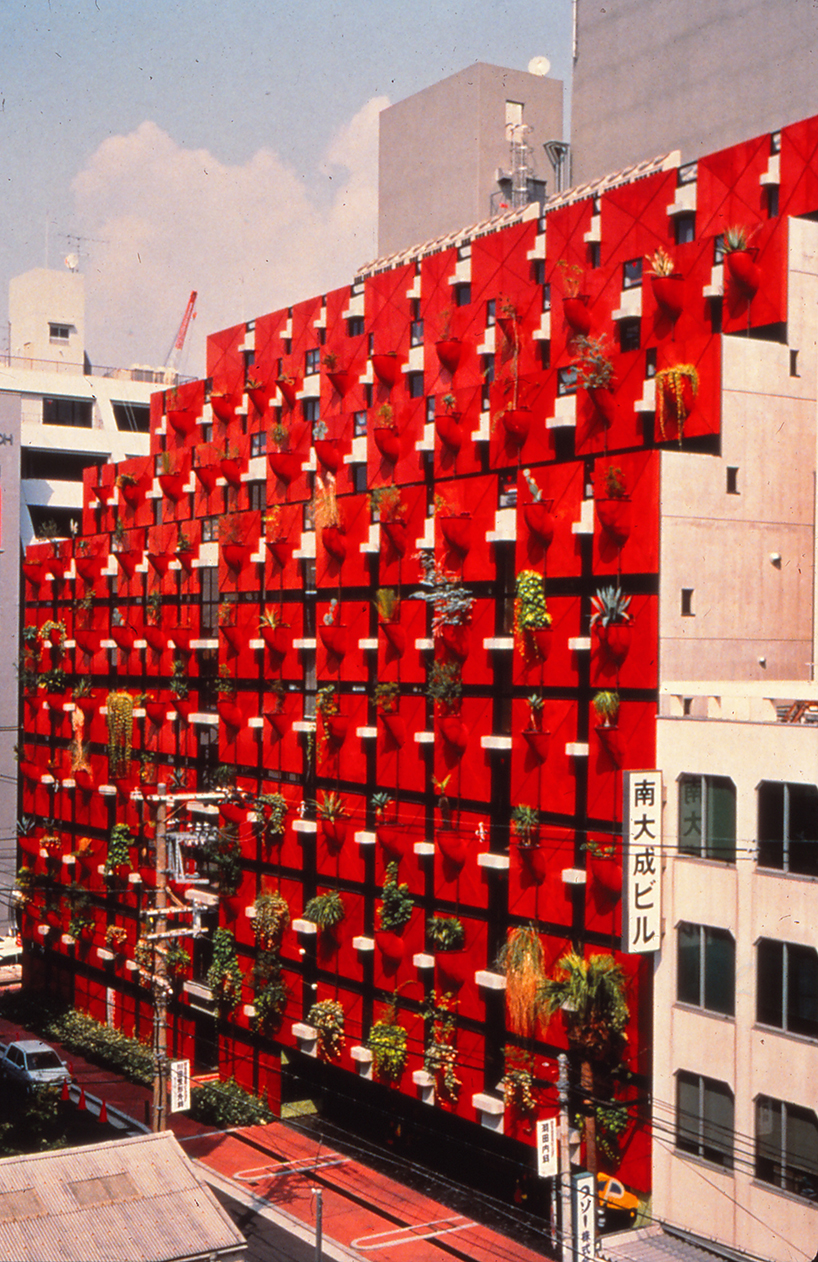
organic building, 1989-1993 | image courtesy of gaetano pesce’s office
DB: you’re working in architecture and sculpture and jewelry sometimes — how do you approach a range of projects with such different styles and scales?
GP: I would say it’s more or less the same. you said jewelry — when I have time, I do jewelry. it’s very simple, and the quality of those is that they are very informal, very imperfect. their imperfection becomes a quality, because they are very nice. this imperfection becomes something that I’ve discovered people really like. sometimes, some designers and some artists, try always to be perfect — it’s wrong! because perfection is very abstract, very neutral, very cold. the mistake, and the fault, are very human.
DB: is there a field that you have not yet worked in that you would like to?
GP: when I was curious about making a movie, I did it — twice. with music, in the old times, I made a record, a vinyl at the time. more or less, if I have a curiosity, for sure I have no problem following that curiosity, and satisfying that curiosity.
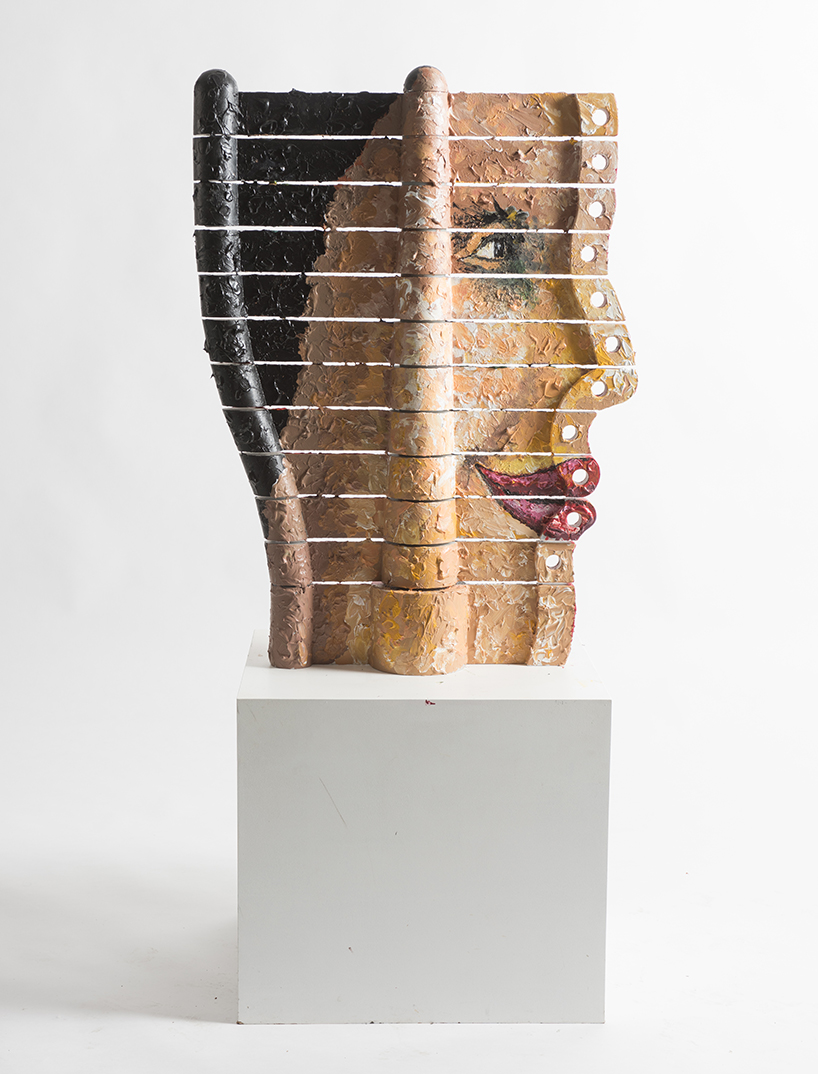
portrait lamp, 2016 | image courtesy of gaetano pesce’s office
DB: what are some of the things outside of architecture and design that you’re interested in, and how do you incorporate them into your work?
GP: last week I was in paris. I was in a hotel that is very tall, and on a hill, so I was looking down to paris. I saw a very strange building, very abstract. it was like one box on top of another, three boxes. ‘very banal’, I thought, because I believe today we can do better. anyway, then I had an interview with a journalist because I was there for the presentation of a book, so I had quite a lot of journalists coming. I asked, ‘what is that?’, and this guy answers, ‘this is the new justice palace designed by renzo piano’. I was very surprised because I know renzo piano and he is a very intelligent person. the justice palace is a very interesting subject, and to resolve that with three boxes — I found that very mediocre. justice, in my opinion, is represented by two things: one is the organic nature of law — so one façade could be a green façade, with vegetation. for the other façade: when you deal with justice, you never know what is going to happen to you. so the other could be, eventually, the representation of a desert, because the best labyrinth is the desert. you can design any labyrinth, but the most intriguing is a desert because you have no idea what you want.
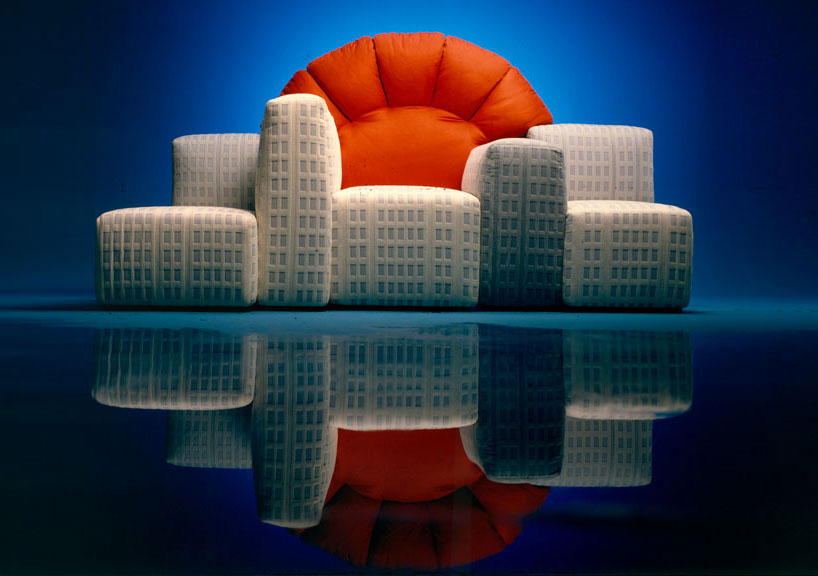
‘sunset in new york’ sofa for cassina | image courtesy of gaetano pesce’s office
GP (continued): so, these two things could be a fantastic representation of a justice palace. architecture today is not anymore — in my opinion — the knowledge that we have of something expressed by geometry. it’s something expressed with images. images of whatever. remember, you know better than me, that we are in a time of computers, and the language of computers is done by images, so I think abstraction is behind us. it’s only for architects — they study a little bit of pop art, and they see that pop art is done by images. that happened 50 years ago. so why architecture has this long delay is a question. if you want an answer to the question, it’s that I think a lot of architects are not architects. they maybe are a little bit ignorant of what they can do. so, here in new york we have this very narrow building, but that is not architecture. that is a building. in italian we have another word for expressing a construction where there is nothing interesting, or no innovation. we call that ‘edilicia’. it’s a building that we need, a building with apartments or offices, and we need them like we need the toothbrush. but, between that and architecture, there is a big difference. architecture is innovation: in technology, material and language. the misunderstanding comes from school, where people go to a school of architecture, and when you finish they say ‘you are an architect’. the consequence is that when they do a project, they think they do architecture. but it’s wrong.
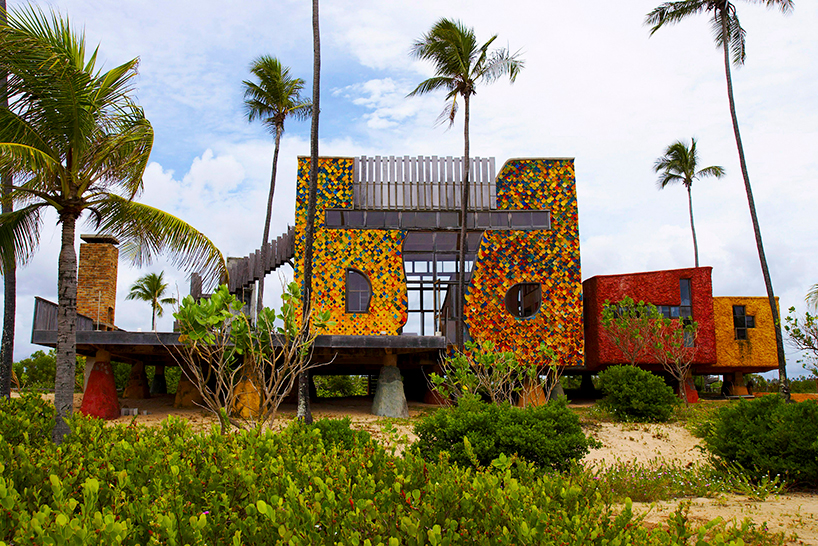
bahia house, 1998 | image courtesy of gaetano pesce’s office
DB: what architecture do you think is most interesting in new york?
GP: frank gehry is one that’s very interesting. piano and rogers, when they did the pompidou were very interesting. le corbusier with the villa savoye was very interesting. notre dame du ronchamp, the church that le corbusier did, is a fantastic example of spiritual space. frank lloyd wright who did the guggenheim — very interesting; fallingwater — fantastic. but that architecture is very rare.
gehry did the guggenheim museum bilbao, and then he did the apartment building in prague, horrible project….mies van der rohe, the barcelona pavilion — fantastic project! then he comes here and he did that horrible building, the seagram building. so you see, it’s not that we are always keeping the same level. also, a lot of architects, they want to do a lot. you can not do a lot if you want to really impress your idea — you cannot. you have to think more.
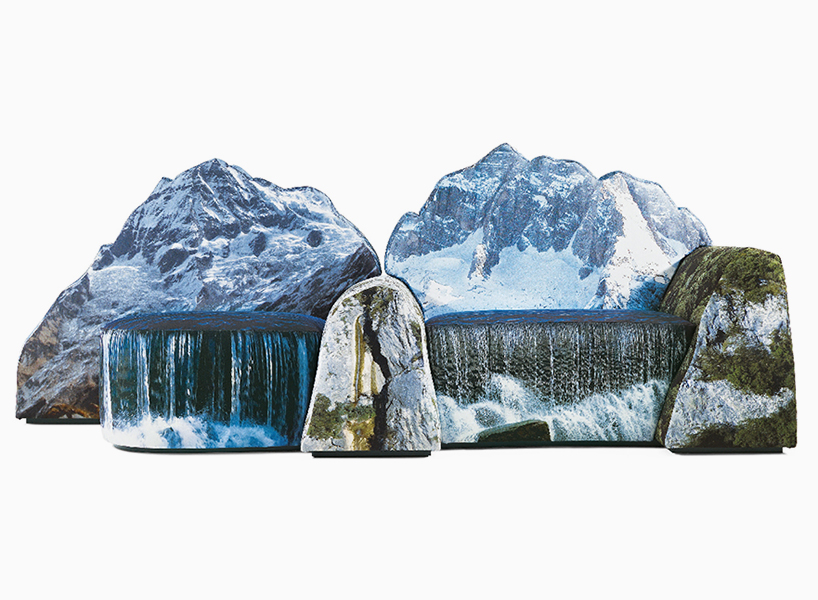
‘montanara’ sofa for meritalia, first presented at milan design week 2009
DB: how do you think your work is perceived by young creatives working today?
GP: one very nice compliment that a journalist gave to me in paris last week — he said that when speaking with a lot of young creators or artists, they mention me as a sample of freedom. I hope that is true, but you never know.
DB: you were saying that you feel architecture has been changed by image — how do you think the saturation of media has changed the field?
GP: I think we need, from time to time, buildings that represent something that we recognize as a figure. until now, the only one I know that was making this kind of experience was herzog & de meuron, when they did the stadium in china [the ‘bird’s nest’]. they did this shape of something that is in the reality of china, that is in the identity of china. they took that sample and they transformed it into a stadium. it was an image, very strong, and I enjoyed it. I think it is one of the only ones that I know of, of images.
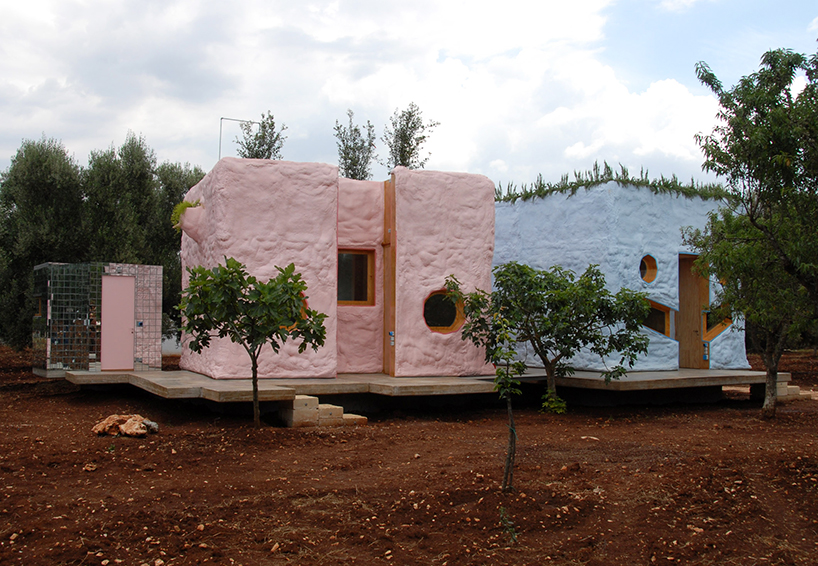
the pescetrullo concept and architectural design, 2008 | image courtesy of gaetano pesce’s office
DB: what do you think is your strongest skill, and how have you developed it over the course of your career?
GP: I think if you are curious, it’s a very important quality. curiosity is a spring for going on in history, in the future and in the present. curiosity pushes mentality, which pushes ideas to discover. even now, I am very curious. when there is something I don’t understand, I try to understand. that is a very healthy attitude for a creative person.
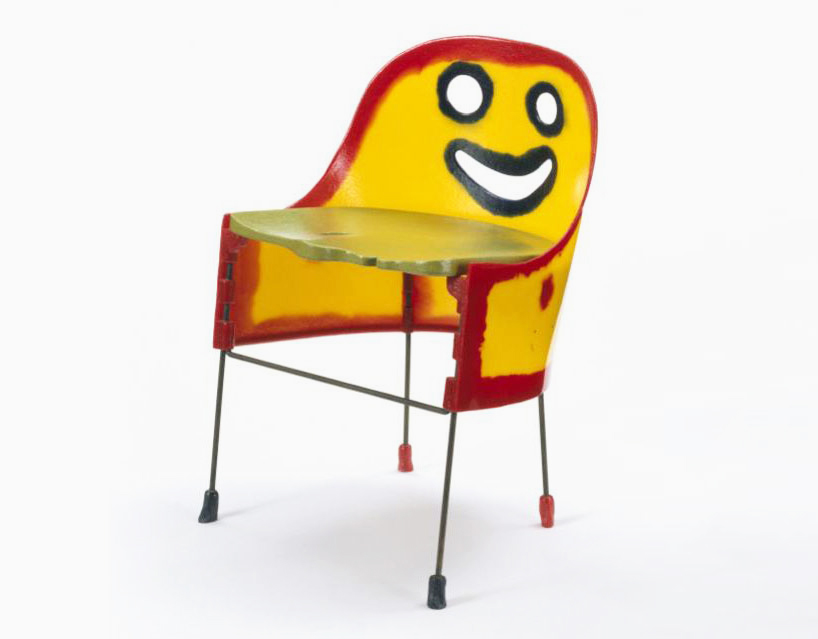
crosby chair, 1999, for de padova | image courtesy of gaetano pesce’s office
DB: if money was no object, and you could work anywhere in the world, what would your dream project be?
GP: sometimes, when I’m asked what object I admire the most, I answer: the bulb. it is also something that I would like to be the one that discovered that, because that is an object with no pretense. it doesn’t pretend to be very nice, or very beautiful with new materials or whatever. it’s just something that helps human beings make incredible things. I think the object that I would like to do is this kind of object. without pretensions or aesthetics, something that is real and necessary for progress, because this opened incredible possibilities for human progress.
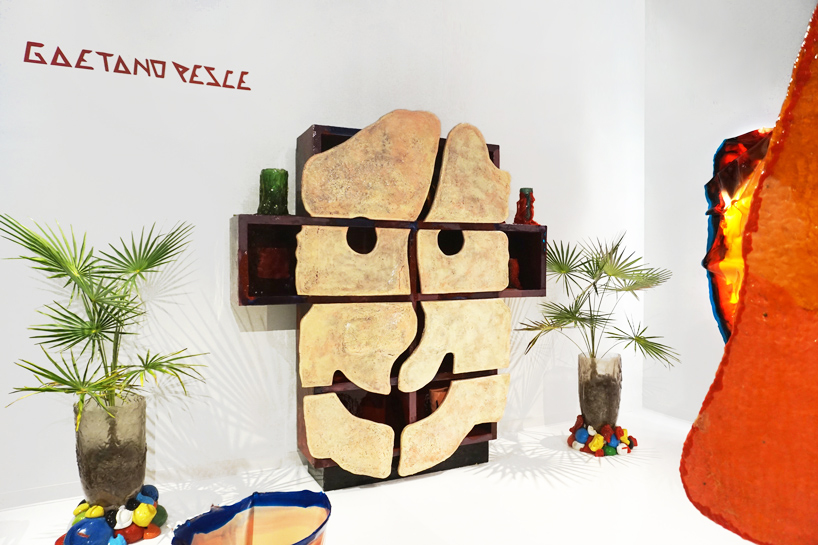
pesce presented a colorful cast of characters for salon 94 at design miami/2016
see more about the exhibition on designboom here
DB: you’ve lived all over the world — what do you find most interesting about living and working in new york?
GP: well, living in new york is like living in the city that is the nature of a city — it’s very close to the nature of our time. it’s very confident, very pluralistic, very liquid in a certain way, where you have values that go up and down — this city is a little bit like that. they say that the future is shanghai — they said that already in the last century — but I don’t believe it. shanghai is still a little copy of this city. homogeneity is there. new york is not a city that is homogeneous. this is a city learned through difference, and that is very actual, very typical of our time, very democratic. I don’t think shanghai is very democratic, for the reasons we know. minorities in this city can keep their identity — this is a very luxurious thing. it is a city of the future, it is a beautiful model, for other cities. london is not like this…paris is not like this…franfurt, berlin, rome are not like this…jerusulam is not. this is really the city of difference.
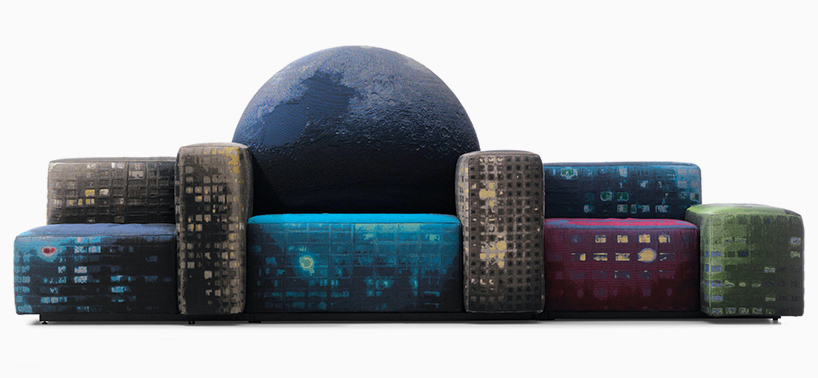
‘notturno a new york’ for cassina, 2010
DB: you also have a studio in brooklyn — is it similar to this space in soho?
GP: it is completely different, a completely different space. we were in a very beautiful one when we moved. now we’re in another one that is less beautiful, but bigger in the navy yards. then, we’ll move again in two months because I don’t like where we are. there are interesting things, a lot of things going on, a lot of noise, but it’s where we work, where we make experiences.
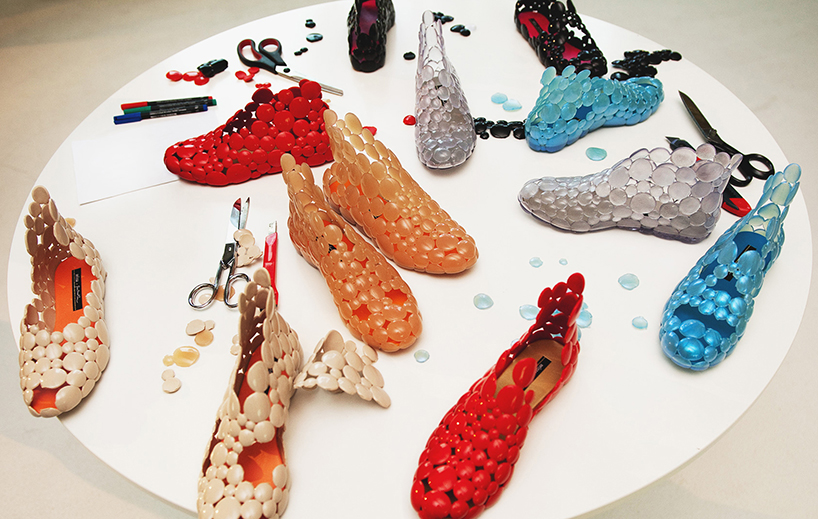
‘fontessa‘ footwear designed for melissa shoes
DB: do you like to teach?
GP: no, no, no, no. teaching is very difficult. because you have to be innovative each time you talk to the students, otherwise you become repetitive and they become bored by that. I taught for a long time in a school of architecture in france, and I tried each time to go in with a new idea, something new to provoke them. I was doing that every week, and then I started to go every month, and then every 3 months, because I was not able to keep this kind of innovative intervention. I had a very interesting experience with the students there, it was such a long time ago.
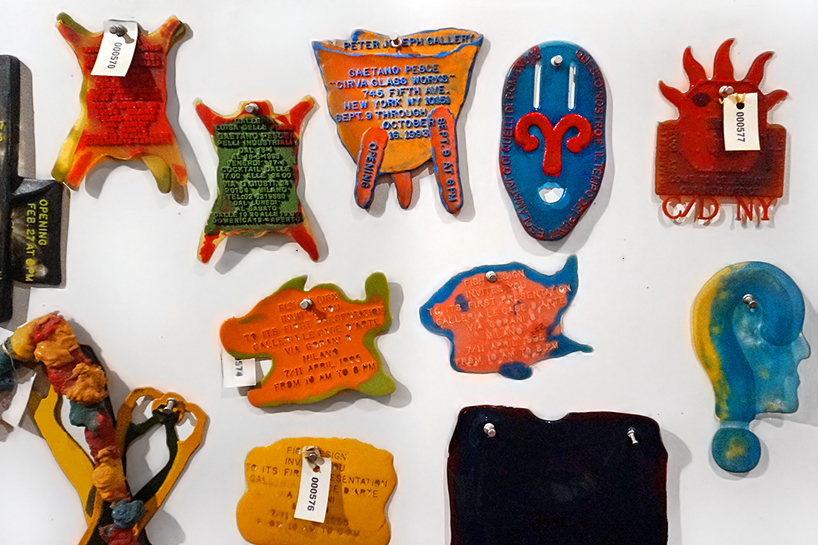
handmade resin invitations line the walls of pesce’s studio in new york city
image © designboom
GP (continued): I assigned the subject of a justice palace in moscow. in moscow, there was a problem with freedom, there was a problem with a very repressive regime, a horrible regime, and the students were in the conditions to choose or express a political point of view, or not to express one. so, like an architect that has to work in a country where there is no democracy, and if you are someone very attached to democracy, you have to make a kind of negative architecture — and the students were doing that. they learned to make an expression that was very negative. it was very interesting. many of the architects I know are very advanced, very open minded, very democratic, but when they do architecture they are the opposite. a skyscraper where each floor is the same — if you transform that image in an image of society, it’s horrible. there is no freedom, you have a cliché. it is repetitive. there is no freedom for the individual. I believe each floor is an individual, they have to be different.
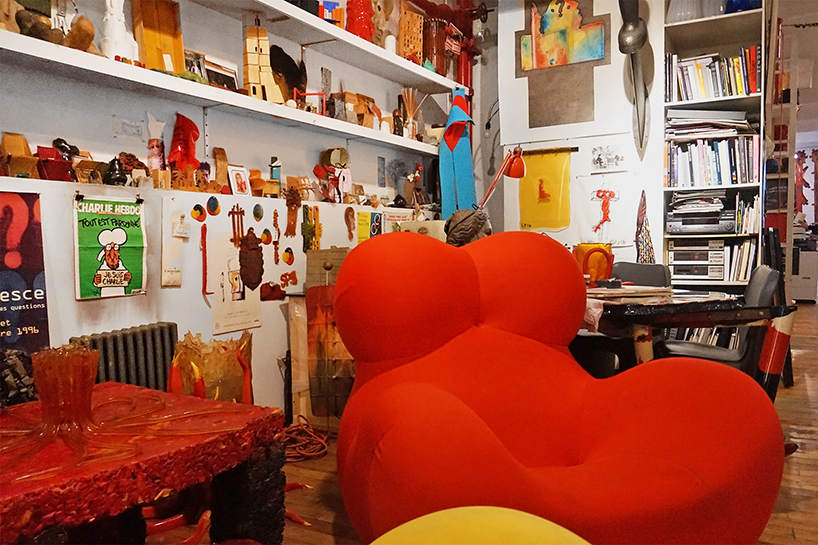
some of pesce’s most famous pieces feature throughout his soho workspace
image © designboom
DB: what are some projects you’re working on now?
GP: I’ll tell you something that before I went to paris I was trying to do — I need to make some panels for a cabinet, and I started to test how the panels could represent an explosion. our time is full of explosions, there are wars everywhere, there are people who shoot other people dancing, as you know, and there are more and more of these crazy people. so the explosion becomes almost the characteristic of the everyday. I think it becomes a document of reality. I haven’t arrived at the solution just yet, but slowly…
Save
Save
Save
gaetano pesce (29)
PRODUCT LIBRARY
a diverse digital database that acts as a valuable guide in gaining insight and information about a product directly from the manufacturer, and serves as a rich reference point in developing a project or scheme.
